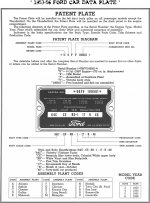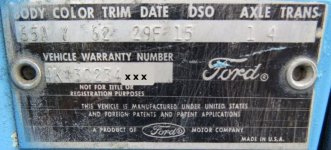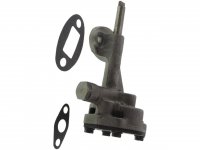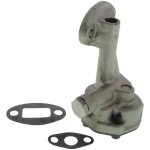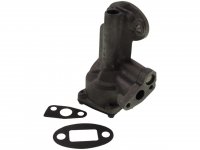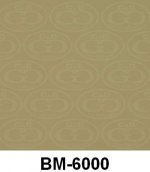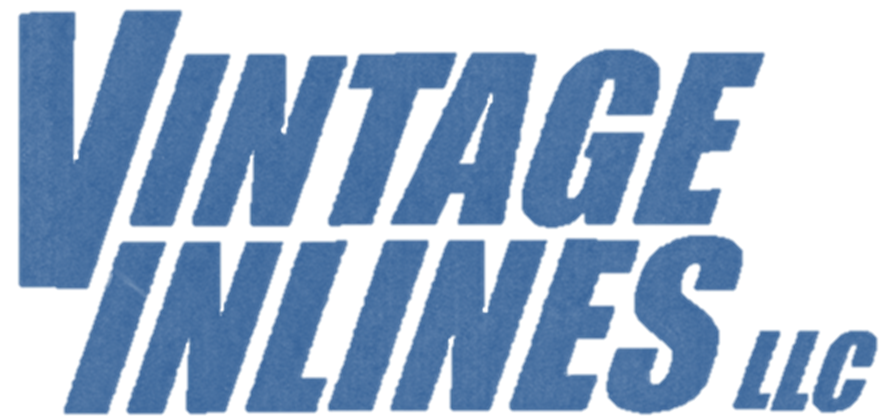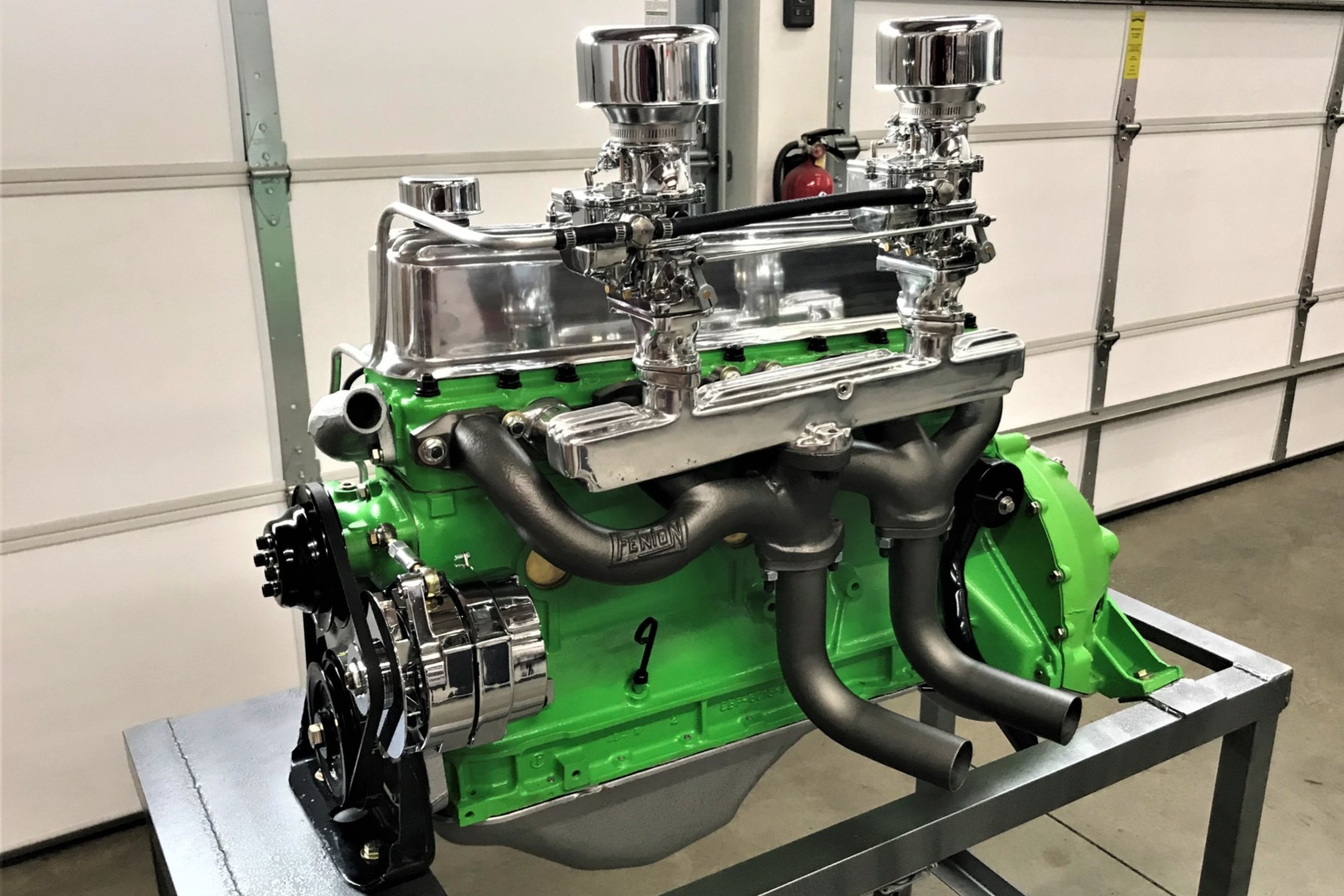In doing some research the last few days on the Ford Six Oil Pumps I had though there were only two different Pumps. Turns out I was wrong and there are Four different oil pumps made by Melling that cover all the different size's of the Ford's First OHV Six engine Family 215, 223, & 262. Using the Vin code you can find the engine code if its still the original engine this would be the first letter on the early model Ford cars Patent Plates for a 215 or 223 six 1952 to 1959 this is an A code, see below picture 1 of a 1956 Ford Vin / Patent Plate or the Warranty Door Tags on the later models (see Picture 2 below for a 1964 Ford Car) the Pickup Trucks will look semular.
The first Oil Pump is the Melling M-25 (see Picture 2 below) this pump fits the 1952 and 1953 215 Ford Six (First OHV six in this engine family) and the 1954 223 first year for the bigger 223 six also uses it this oil pump covers all the Ford car models and all 1951 to 1954 Ford truck models from F1, F2, F3, F4, & F100, F250, F350 & P350, for a 215 or 223 OHV six both these have an A for the engine code.
The second Oil Pump is the Melling M-43 (see Picture 3 below) this pump fits all Ford 223 car and truck engines from 1955 to 1959, as well as the 1960 223 Ford Trucks with a J engine code and the 1959 Edsel 223 with an A engine code, it also fits the 1960 Ford's and Edsel's 223 with a V engine code.
The third Oi Pump is the Melling M-67 (see Picture 4 below) this pump fits all the Ford and Mercury 223 six car engines with a V engine code from 1961 to 1963. Also fits all 1961 to 1963 F100, F250, F350 Ford 223 six Trucks with a J engine code & 262 six Truck engines with a B code engine F250, F350, and also the bigger F500, F600, etc. trucks too.
The fourth Oil Pump is the Melling M-67A (see Picture 5 below) this pump only fits in the 1964 Ford 223 six cars with a V engine code & all the 1964 Ford F100, F250, F350, and bigger Trucks with a 223 six with a J engine code or the 262 six with a B engine code.
The oil pumps still might be interchangeable for the M-25 & M-45 these both have the oil pick up tube mounted on the bottom cover so as long as your using the right year of parts combos, like the oil pumps pickup tubes, with the right oil pan, and the correct oil pump drive and distributors I think it should fit and work. Or for the M-67 and M-67A these both have the oil pick up tube mounted on the side of the oil pump body so again as long as your using the right year of parts combos, like the oil pumps pickup tubes, with the right oil pan, and the correct oil pump drive and distributors I think it should fit and work. For the purposes of this build will be going with the Melling M-67A Oil Pump to be able to easily use the 5/16 Hex drive that fits the 300 Ford Six DuraSpark II distributor swap.
The first Oil Pump is the Melling M-25 (see Picture 2 below) this pump fits the 1952 and 1953 215 Ford Six (First OHV six in this engine family) and the 1954 223 first year for the bigger 223 six also uses it this oil pump covers all the Ford car models and all 1951 to 1954 Ford truck models from F1, F2, F3, F4, & F100, F250, F350 & P350, for a 215 or 223 OHV six both these have an A for the engine code.
The second Oil Pump is the Melling M-43 (see Picture 3 below) this pump fits all Ford 223 car and truck engines from 1955 to 1959, as well as the 1960 223 Ford Trucks with a J engine code and the 1959 Edsel 223 with an A engine code, it also fits the 1960 Ford's and Edsel's 223 with a V engine code.
The third Oi Pump is the Melling M-67 (see Picture 4 below) this pump fits all the Ford and Mercury 223 six car engines with a V engine code from 1961 to 1963. Also fits all 1961 to 1963 F100, F250, F350 Ford 223 six Trucks with a J engine code & 262 six Truck engines with a B code engine F250, F350, and also the bigger F500, F600, etc. trucks too.
The fourth Oil Pump is the Melling M-67A (see Picture 5 below) this pump only fits in the 1964 Ford 223 six cars with a V engine code & all the 1964 Ford F100, F250, F350, and bigger Trucks with a 223 six with a J engine code or the 262 six with a B engine code.
The oil pumps still might be interchangeable for the M-25 & M-45 these both have the oil pick up tube mounted on the bottom cover so as long as your using the right year of parts combos, like the oil pumps pickup tubes, with the right oil pan, and the correct oil pump drive and distributors I think it should fit and work. Or for the M-67 and M-67A these both have the oil pick up tube mounted on the side of the oil pump body so again as long as your using the right year of parts combos, like the oil pumps pickup tubes, with the right oil pan, and the correct oil pump drive and distributors I think it should fit and work. For the purposes of this build will be going with the Melling M-67A Oil Pump to be able to easily use the 5/16 Hex drive that fits the 300 Ford Six DuraSpark II distributor swap.

